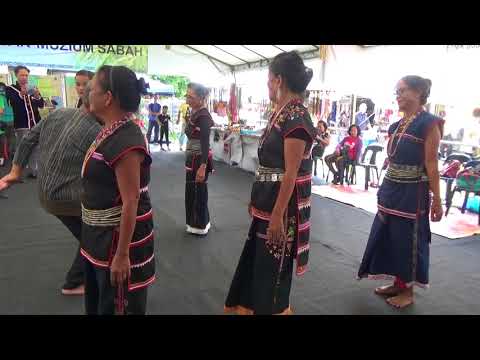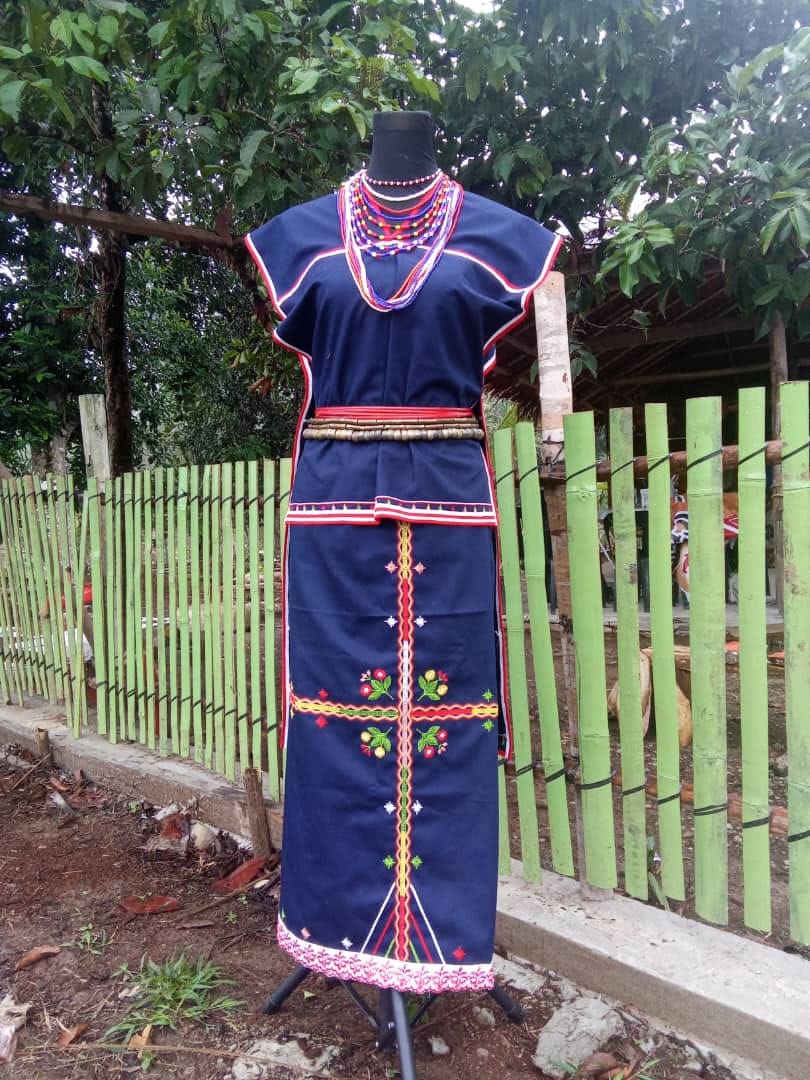ARTS AND CULTURE INFORMATION GATEWAY
Immerse yourself in the colorful world of art and culture! From traditional heritage to contemporary works, discover uniqueness that reflects the nation's identity and identity
MONGIGOL MENGALAI
Picture
3
Video
No record
Today's Visitor
21
Number of Visitors
1363
Introduction and history
Mongigol Mengalai is a traditional dance of the Kadazan-Dusun ethnic group of the Dusun Tinagas tribe. This sub-ethnic group predominantly resides in the upper Sugut River region, a hilly area situated at the intersection of the Ranau, Kota Marudu, and Labuk-Sugut districts in northern Sabah. "Mongigol," which means "to dance," is performed exclusively by women, whereas "Mengalai" refers to a solo performance by a male dancer accompanied by female dancers.
Originally, this dance was performed as part of a ritual to honour the spirit of the rice, known as the Magavau or Maga'au ritual. This ceremony was traditionally held annually during the Kaamatan Festival to express gratitude to ‘Bambazon.’ Over time, its purpose has broadened to include various celebrations, such as weddings, welcoming dignitaries, and other cultural festivals or events. The dance is more than a performance; it also symbolises harmony, cooperation, and respect for the traditional culture and beliefs of the Dusun Tinagas tribe.
Female dancers wear traditional attire consisting of a long black or indigo blouse known as Lapoi Rinninggitan. It is made from Asap fabric, a type of silk, with the blouse designed to extend at the back and paired with a skirt called Tapi. This outfit is unique due to its decorative embroidery, featuring red and white stripes, with some variations adorned with floral patterns. The embroidery is typically categorised into three types:
1. ‘Binuluntung’ – Horizontal stripes in red (Kesumba) and white (Balasu).
2. ‘Sinorongipon’ – Triangular geometric patterns.
3. ‘Nundalo’ – Fishnet patterns.
The performance is accompanied by two primary musical instruments: the Kulintangan and the gongs. The gongs are categorised into six types and divided into two groups: three large gongs and three smaller ones. Each gong differs in size and sound resonance, producing a distinct range of tones that enhance the richness and complexity of the musical accompaniment.
The small gong category includes the ‘Salasakon’, which produces a fast tempo; the ‘Poloniton’, which creates a syncopated (irregular) rhythm; and the ‘Kolimbongbongon’, known for its complex and varied rhythmic patterns. In contrast, the large gong category comprises the ‘Polian’, ‘Sunduron’, and ‘Bogilon’, characterised by their deeper, resonant sounds. These gongs are played using two sticks, known as ‘Pokoritik’: one is used to strike the centre of the gong, producing a bass sound, while the other strikes the sides, creating the distinctive "bong bong" sound. This interplay of rhythmic complexity and deep resonance enhances the musical texture, adding a unique and dynamic quality to the performance.
Typically, this dance is performed by a group of five to six female dancers accompanied by one or two male dancers. The primary movements emphasize intricate hand and footwork. Female dancers generally form a straight line and perform movements with their arms relaxed at their sides. Their shoulders rotate in a fluid motion from the inner side to the outer side, a distinctive movement known as ’Sumirid’.
Meanwhile, their footwork involves short and low steps, with the feet remaining close to the ground and not raised high or walking on the toes. Instead, the left and right feet alternate, applying pressure on the heel and sole in close succession, creating graceful, dragging steps.
In contrast to female dancers, male dancers also perform the sumirid movement but with larger arm swings, alternating between the left and right arms. Their steps are wider, and their jumps are higher than the women's. When performing solo, male dancers typically position themselves at the front of the formation. However, when dancing in pairs, one male dancer takes the position at the very back, creating a formation with dancers flanking both the front and rear.
-
Reference Source
Pugh-Kitingan, J. (2014). Balancing the human and spiritual worlds: ritual, music, and dance among Dusunic societies in Sabah. Yearbook for Traditional Music, 46, 170-190. https://doi.org/10.5921/yeartradmusi.46.2014.0170
Pugh-Kitingan, J. (2012). Gong ensemble music of the dusun tinagas of sabah through the gaze of movement. Yearbook for Traditional Music, 44, 149-165. https://doi.org/10.5921/yeartradmusi.44.0149
Sri Ningsih Sukirman. (2020). Asal Usul Tarian Tradisional Pelbagai Budaya Di Luar Dan Di Sabah: The Various Traditional Origins of Cultural Dance Outside and in Sabah. Jurnal Gendang Alam (GA), 10(2). https://doi.org/10.51200/ga.v10i2.2843
Pangayan, V. B. (2023). Tarian Pinakang Etnik Kimaragang Di Sabah: Analisis Makna dan Falsafah (Tesis Doktor Falsafah).
Location
State JKKN Contact Information
Puan Nurshahrinna Syahrial
Cultural Officer
Jabatan Kebudayaan dan Kesenian Negara, Sabah
Kompleks JKKN Sabah,
Jalan Tasik off KM4 Jalan Penampang,
88200 Kota Kinabalu
SABAH
088-205070
Use the form below to contact the Informant/Figure/Editor/Researcher directly. We will respond to your inquiry as soon as possible!











